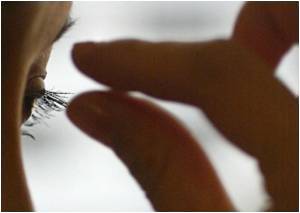Researchers have found that the light-capturing pigment molecule in photoreceptor cells (rhodopsins) in the eye can be triggered by heat giving rise to false alarms- a misfiring of

According to Yau, apart from rhodopsin, there are other pigments present in red-, green- and blue-sensitive cone photoreceptors that are used for color and bright-light vision.
"In many amphibians, one type of rod cells called green rods naturally express a blue cone pigment, as do blue cones," said Yau.
So to determine whether heat can cause pigment cells to misfire, the team, working in the dark, first cooled the cells, and then slowly returned the cells to room temperature, measuring the electrical activity of the cells as they warmed up. They found that red-sensing pigment triggers false alarms most frequently, rhodopsin (bluish-green-sensing pigment) triggers falsely less frequently, and blue-sensing pigment does so even less.
The study was published in the June 10 issue of Science.
Source-ANI











